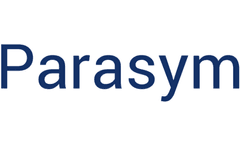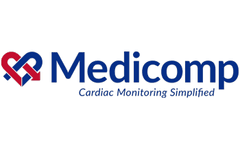Patient Moving Handling Training Course Articles & Analysis
6 articles found
I recently had the pleasure of attending the IPEG annual meeting in Sorrento, Italy. The collegiality of the surgeons attending the conference was fantastic, and the views of Sorrento and the Island of Capri were stunning. With smaller accessible markets (due to smaller patient volumes and higher incidence of rare disease), specialty areas like pediatrics have been overlooked and under-addressed ...
Abstract Background: Five-year survival for stage I-II lung cancer is quite low even after complete surgical resection. Current guidelines recommend adjuvant treatment only for selected patients with stage II or higher disease. A prediction model that identifies patients at high risk of recurrence who may benefit from adjuvant treatment is greatly needed. Many existing prediction models include ...
Depression and the vagus nerve Depression affects millions of people worldwide and constitutes a leading cause of disability. Although pharmacological interventions are available, many of them produce suboptimal outcomes due to high non-responsive rates or intolerable side effects. It has been estimated that between 20 to 40 per cent of patients either failed to respond to conventional ...
Technology continues to evolve every day. In the near-term future, portable and easily deployable robots will allow surgeons all over the world to perform minimally invasive surgery in an increasing number of procedure types and become even more effective surgeons. To achieve our goal of having a future surgeon workforce that meets the demands of an aging population and delivers good patient ...
Telemedicine, or the ability for a doctor to complete a patient examination remotely utilizing technology, is not a new concept. In fact, the concept dates back to 1925 when Hugo Gernsback published a theory that remote aperture that could be controlled wirelessly to help a doctor physically “examine” a patient. Today’s telemedicine has advanced tremendously with the advent of ...
MRI use is on the rise, and so is the number of adverse MRI incidents – by an alarming 185% over the last five years.* while the number of incidents is small compared to the number of procedures performed, even one is too many for any clinic, hospital or research facility. A comprehensive MRI safety program is a must for any health care provider with a zero tolerance for MRI errors. A zero ...




![Robotic surgery’s impact on training the next generation of surgeons [PODCAST] Robotic surgery’s impact on training the next generation of surgeons [PODCAST]](/_ipx/q_80&s_240x145/https://d32zuqhgcrpxli.cloudfront.net/eyJidWNrZXQiOiJlZS1maWxlcyIsImtleSI6ImZpbGVzLzExNTYwMi9pbWFnZXMvMTE1NjAyXzBfMjAyMTA0MjAwNTEzMjc5OTUzOTIzXzQwMC5wbmciLCJlZGl0cyI6eyJyZXNpemUiOnsiZml0IjoiY29udGFpbiIsImJhY2tncm91bmQiOnsiciI6MjU1LCJnIjoyNTUsImIiOjI1NSwiYWxwaGEiOjF9LCJ3aWR0aCI6MjQwLCJoZWlnaHQiOjE0NX19fQ==)

